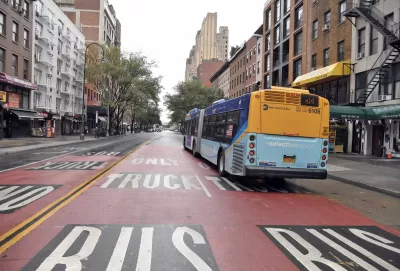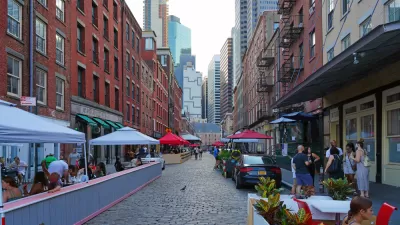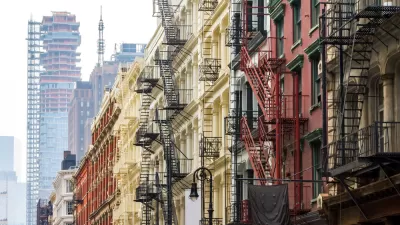The former mayor's administration oversaw several major changes in the city's skyline, streets, and public spaces.

An article by Rachel Holliday Smith describes the changes that have happened to New York City's built environment and skyline during former Mayor Bill de Blasio's administration, which include rezoning, bus lanes, and more supertall buildings.
Some of the changes that impacted the city the most, writes Holliday Smith, are the adoption of outdoor dining and living spaces during the pandemic, programs which the city wants to make permanent. The city also invested heavily in the renovation of city parks in underserved communities and expanded bus and bike lanes.
The article also points to the East Side Coastal Resiliency Project which, while controversial, aims to protect a densely populated neighborhood from flooding and rising sea levels. Another major change: the city's shift of a third of its public housing units to private management using the federal Rental Assistance Demonstration program, which is designed to help cities improve conditions in affordable housing units. Meanwhile, the NYCHA hopes to receive at least $35 billion in assistance funds from the Build Back Better plan in order to meet its $40 billion backlog.
In the past eight years, nine neighborhoods have been rezoned to allow for more density, but critics point out that early efforts focused primarily on low-income neighborhoods, while the results of these rezoning efforts will take years to manifest.
FULL STORY: Skylines and Streetscapes: How New York City Physically Changed in de Blasio Era

Planetizen Federal Action Tracker
A weekly monitor of how Trump’s orders and actions are impacting planners and planning in America.

Restaurant Patios Were a Pandemic Win — Why Were They so Hard to Keep?
Social distancing requirements and changes in travel patterns prompted cities to pilot new uses for street and sidewalk space. Then it got complicated.

Map: Where Senate Republicans Want to Sell Your Public Lands
For public land advocates, the Senate Republicans’ proposal to sell millions of acres of public land in the West is “the biggest fight of their careers.”

Maui's Vacation Rental Debate Turns Ugly
Verbal attacks, misinformation campaigns and fistfights plague a high-stakes debate to convert thousands of vacation rentals into long-term housing.

San Francisco Suspends Traffic Calming Amidst Record Deaths
Citing “a challenging fiscal landscape,” the city will cease the program on the heels of 42 traffic deaths, including 24 pedestrians.

California Homeless Arrests, Citations Spike After Ruling
An investigation reveals that anti-homeless actions increased up to 500% after Grants Pass v. Johnson — even in cities claiming no policy change.
Urban Design for Planners 1: Software Tools
This six-course series explores essential urban design concepts using open source software and equips planners with the tools they need to participate fully in the urban design process.
Planning for Universal Design
Learn the tools for implementing Universal Design in planning regulations.
Heyer Gruel & Associates PA
JM Goldson LLC
Custer County Colorado
City of Camden Redevelopment Agency
City of Astoria
Transportation Research & Education Center (TREC) at Portland State University
Camden Redevelopment Agency
City of Claremont
Municipality of Princeton (NJ)




























